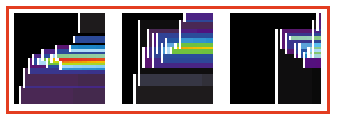Price Activity Charts: An Innovative, Profit-Generating Way To...
Visualize Price Movement
by François Bertrand
Detecting the strength and direction of investor sentiment at an early stage is critical for successful trading. Here's an inventive, profit-generating type of charting that provides unparalleled insight into volume.
Detecting the strength and direction of investor sentiment toward a stock at an early stage is critical for successful trading. Volume, the number of shares traded for a stock on a given day, has long been recognized as a premier indicator of investor emotion and is used daily by traders under one form or another.
Price activity (PAC) charts are a potent yet highly intuitive method of charting. Their innovative layout of data offers analysts unparalleled visual insight on volume with respect to both price and time. These charts are simple in concept and potent at detecting breakouts, the strength and location of actual resistance/support levels, and by their very nature, leverage well-known formations such as pennants, triangles, flags, and consolidation areas (Figure 1).

FIGURE 1: HIGH-VOLUME ACTIVITY. By their very nature, price activity charts expose consolidation areas and short-term consolidation patterns (flags, pennants) as highly visible areas of intense activity.
CONCEPT AND BENEFITS
Like many well-established indicators, PAC charts aim at measuring investor emotion levels (through volume measurement) for a given stock. However, PAC charts track volume independently at each price point, not just total volume for the entire stock. In addition, this information is compounded and weighed over time. While this approach is similar in some ways to "price by volume" histograms, the tracking and compounding of data per price point, per day, effectively increases the amount of information provided by PAC charts by an order of magnitude. In effect, the per price-point information reveals exactly at which prices, which point in time, and what quantities that investors have been trading. This data offers real benefits to investors.
First, the compounding of volume information is apt at detecting volume buildups, making the data a powerful tool for detecting breakouts and differentiating between actual and false breakouts. Breakouts with high volume are regarded as being more likely to succeed.
In addition, the data directly reveals the strength and location of
resistance and support levels. If you define these levels as prices where
there is a lot of fresh "supply," you'll find that PAC charts often reveal
significant trading levels that would otherwise remain unseen. With PAC
charts, resistance and support levels are no longer a hand-drawn approximation
on a graph, but are (as in real life) embedded in the data.
...Continued in the June issue of Technical Analysis of STOCKS & COMMODITIES
Excerpted from an article originally published in the June 2005 issue of Technical Analysis of STOCKS & COMMODITIES magazine. All rights reserved. © Copyright 2005, Technical Analysis, Inc.
Return to June 2005 Contents